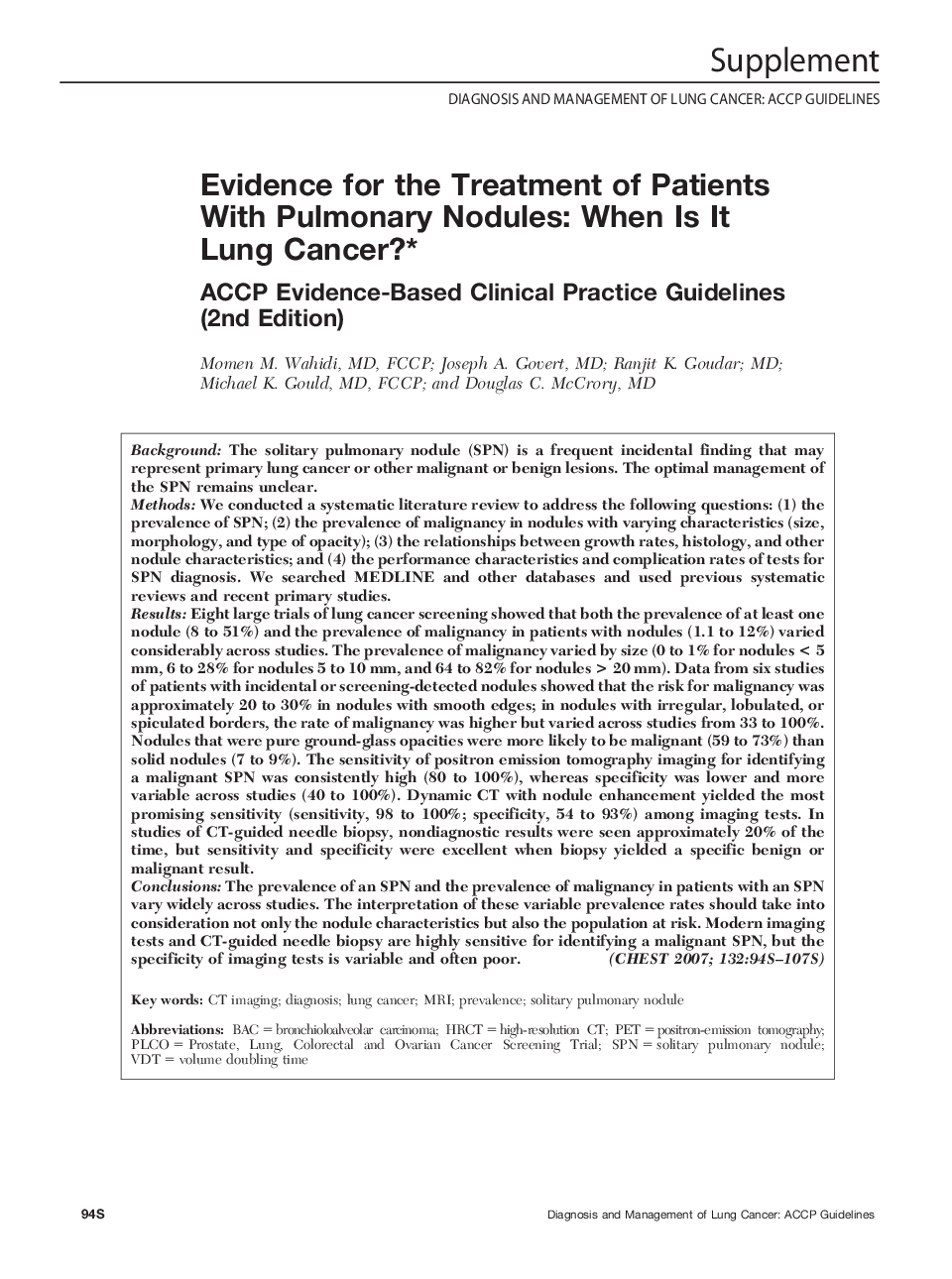| Article ID | Journal | Published Year | Pages | File Type |
|---|---|---|---|---|
| 2906390 | Chest | 2007 | 14 Pages |
BackgroundThe solitary pulmonary nodule (SPN) is a frequent incidental finding that may represent primary lung cancer or other malignant or benign lesions. The optimal management of the SPN remains unclear.MethodsWe conducted a systematic literature review to address the following questions: (1) the prevalence of SPN; (2) the prevalence of malignancy in nodules with varying characteristics (size, morphology, and type of opacity); (3) the relationships between growth rates, histology, and other nodule characteristics; and (4) the performance characteristics and complication rates of tests for SPN diagnosis. We searched MEDLINE and other databases and used previous systematic reviews and recent primary studies.ResultsEight large trials of lung cancer screening showed that both the prevalence of at least one nodule (8 to 51%) and the prevalence of malignancy in patients with nodules (1.1 to 12%) varied considerably across studies. The prevalence of malignancy varied by size (0 to 1% for nodules < 5 mm, 6 to 28% for nodules 5 to 10 mm, and 64 to 82% for nodules > 20 mm). Data from six studies of patients with incidental or screening-detected nodules showed that the risk for malignancy was approximately 20 to 30% in nodules with smooth edges; in nodules with irregular, lobulated, or spiculated borders, the rate of malignancy was higher but varied across studies from 33 to 100%. Nodules that were pure ground-glass opacities were more likely to be malignant (59 to 73%) than solid nodules (7 to 9%). The sensitivity of positron emission tomography imaging for identifying a malignant SPN was consistently high (80 to 100%), whereas specificity was lower and more variable across studies (40 to 100%). Dynamic CT with nodule enhancement yielded the most promising sensitivity (sensitivity, 98 to 100%; specificity, 54 to 93%) among imaging tests. In studies of CT-guided needle biopsy, nondiagnostic results were seen approximately 20% of the time, but sensitivity and specificity were excellent when biopsy yielded a specific benign or malignant result.ConclusionsThe prevalence of an SPN and the prevalence of malignancy in patients with an SPN vary widely across studies. The interpretation of these variable prevalence rates should take into consideration not only the nodule characteristics but also the population at risk. Modern imaging tests and CT-guided needle biopsy are highly sensitive for identifying a malignant SPN, but the specificity of imaging tests is variable and often poor.
